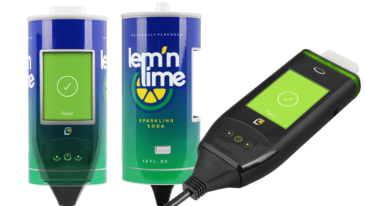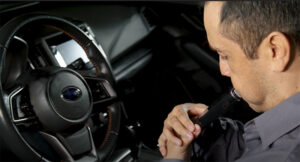
Despite efforts by organizations like MADD, underage drinking and driving remains a serious problem in America. In 2016, of the 4,412 fatal crashes amongst the 16- to 20-year-old demographic, 663 (15%) of them were caused by an underaged driver with at least .08 BAC. Simply put, underage drinking and driving has a strong correlation with a solid minority of motorist fatalities.
If you’re a parent, it’s your job to let your child know that; illegality aside, such actions are selfish and put everyone on the road in grave danger. You must teach them that there are real consequences to making such a poor decision. Curious what those consequences are? Read on to find out.
National Minimum Drinking Age Act
After a few years of driving a vehicle, the act itself becomes second nature. It’s easy to forget the fear, uncertainty, indecision, and various rules and factors you had to consider when you first got behind the wheel. Understandably, younger, less experienced drivers are more likely to get in an accident than adult drivers. This phenomenon occurs for a host of reasons, including lack of practice, increased likelihood of distracted driving, and the developing brain. Sadly, these dynamics are only exacerbated by those who make the poor decision to drink and drive.
With that in mind, we know now that drivers under the age of 21 are more than two times as likely to be involved in a fatal car crash if they had been drinking, when compared to inebriated drivers over the age of 21. In the early 1980s, this grisly phenomenon was playing out with spikes in drunk driving fatalities and alcohol-related crashes hitting all-time peaks.
In response to this mounting societal problem, particularly the underage drinking issue, the newly established Mothers Against Drunk Driving (MADD), in conjunction with other similar advocacy groups, helped to push congress to pass the National Minimum Drinking Age Act of 1984. This act was intended to tackle the following issues:
- Establish a uniform, statewide, minimum drinking age of 21.
- Improve and support law enforcement’s capabilities
- Reduce drunk driving
The act required that, “States prohibit persons under 21 years of age from purchasing or publicly possessing alcoholic beverages as a condition of receiving State highway fund.” So, in order to receive those much-needed federal highway funds, every state soon complied.
According to recent studies this had noticeable impact on drinking and driving rates:
We find strong evidence that exposure to a Minimum Legal Drinking Age of 18 was associated with large and statistically significant increases in drinking participation and heavy episodic drinking by high school seniors, on the order of 2-3 percentage points. Put differently, we estimate that nationwide increases in the MLDA (i.e. movements away from the most permissive age of 18) reduced youth drinking by about four percent relative to pre-existing levels.
As mentioned, while this did have some immediate effects in drunk driving reduction, many advocates felt that the act didn’t go far enough. So, they pushed for the adoption of zero tolerance laws.
Zero Tolerance Laws
Although the Minimum Drinking Age Act did make some positive changes, it failed to account for the fact that if a teenager was pulled over for “driving drunk” but blew less than .08, they would be free to go and not charged with any penalties. This loophole failed to account for the fact that even one drink could dramatically impact their driving abilities in several different ways, including:
- Depth perception
- Awareness
- Reaction times
- Hand eye coordination
- Judgment
- Risk aversion
This impairment is exacerbated for young people who are inexperienced at both drinking, and driving. Because of that, the combination of the two activities, even in small amounts, is a recipe for disaster. Accordingly, zero tolerance laws were introduced.
But what does zero tolerance mean?
In short, they’re laws that entail mandatory enforcement of violations without providing any leniency or judgment on a case-by-case basis. They remove subjective judgment, intent, or extenuating circumstances from the matter and treat every violator of the law exactly the same. And when it came to drinking and driving, advocates stated that if it was illegal for people under the age of 21 to drink, it should, therefore, be illegal for them to drive a motor vehicle after drinking any alcohol at all.
In retrospect, several studies have found that this had an even more sizable effect on the reduction of underage drinking and driving. One overview study states,
In 1995, to encourage other states to enact the Zero Tolerance Law, Congress stipulated under the National Highway Systems Designation Act (NHSDA) that the states that failed to enact the Zero Tolerance Law would lose a portion of their federal highway construction funding. By 1998, all states had implemented the Zero Tolerance Law. Zwerling and Jones, Wagenaar et al., Voas et al., Carpenter et al., and Liang and Huang showed that the Zero Tolerance Act reduced alcohol-related fatalities by 4% to 24%.
The Consequences of Underage Drinking and Driving
Now, thanks to zero tolerance laws, there are clear and measurable consequences to underage drinking and driving. That said, the zero tolerance BAC limit depends on your particular state but typically, the legal limit ranges between .01% to .03%.
With that in mind, we’ll discuss the DUI process and the resulting consequences.
The Arrest
The initial step of the DUI conviction process involves either being caught at a DUI checkpoint or being pulled over by the cops. In both cases, the police will endeavor to see whether or not the underage driver has been drinking. They judge this according to several factors including:
- Manner of driving
- The smell of alcohol in the car
- Blood-shot eyes
- Slurred speech
- The driver’s present state
If the on-scene officer suspects that the juvenile driver has been drinking, they’ll require that he or she perform a field sobriety test and/or take a breathalyzer test. People under the age of 21 don’t have the legal right to refuse a breathalyzer test. If they do refuse, they’ll lose driving privileges and automatically be suspended from driving for at least one year.
Upon completion of the field tests, the driver will be issued a citation that includes a host of information, including the charges and court dates. Depending on their blood alcohol concentration and the seriousness of other factors, the inebriated motorist may either be arrested or allowed to have a sober adult come pick them up. Typically, their car will be impounded and have to be retrieved at a later time.
Booking
If the on-scene officer believes that an underaged person is guilty of a serious offense of drunk driving, or if they were non-compliant with field testing, the driver may be transported back to the nearest police station. Once there, officers will book them and perform further blood testing to get a conclusive appraisal of the driver’s blood alcohol content. If the driver did indeed blow a .08 blood alcohol concentration, they’ll be fingerprinted, given a mugshot, and then put in a cell until bail can be made.
The Court Appearance
Upon the date of the court summons, the guilty party must show up in court and enter a plea of guilty or not guilty to the charges. Now, at this sentencing stage, the actual BAC is critical since consequences will vary accordingly. In addition, the judge may consider several mitigating circumstances such as:
- A BAC over .15
- Causing bodily injury or death
- Child endangerment
- Driving without a valid driver’s license
- Prior DUI convictions
- Probation for a previous crime
- Property Damage
With that said, it helps to separate them into one of three categories:
BAC of .01% or Greater (Zero Tolerance)
In most cases, this is counted as an infraction or misdemeanor. If the underaged driver is found guilty, they won’t be charged with a criminal DUI charge, nor will they face jail time. However, they’ll face penalties such as a year-long suspended license, and fines and fees.
BAC of .05% or Greater (Zero Tolerance)
For underage drinkers, this is counted as a criminal charge which will stay on their criminal record. Although they won’t go to jail, there are several penalties, including a year-long suspended license, fines and fees, and three months of DUI courses.
BAC of .08% or Greater
At this stage, if the driver is an adult, they’ll be treated no differently from any driver older than 21. Consequently, they may face the gamut of charges including:
- Jail Time – Depending on the state, there may be mandatory jail time, even if it’s for a first-time offender. Naturally, this depends on the seriousness of the DUI:
- Misdemeanor DUI – Minimum 2 days of jail time with a maximum of 6 months.
- Felony DUI – If a passenger or another driver was injured or killed, it can result in a felony DUI and 1 to 5 years’ time served in prison.
- License Suspension – In most cases, the suspension of driving privileges lasts for a year, but BAC plays a substantial role in determining the length of license suspension.
- Probation – If the driver is not given jail time, they’ll most likely be put on probation. Failure to meet those terms would result in additional penalties or jail time. Typically, probation entails periodic supervision and management, the costs for which the guilty party will need to cover.
- Fines and fees – Depending on both the case, state, and judge, the court will require that the underage driver pay the court’s costs as well as fines and fees corresponding to the state’s minimum and maximum penalties. Further, if their car was impounded, they’ll have to pay to have it released from the impound lot.
- Insurance rates – Few things can impact a person’s driving record and insurance rates more than a DUI, even a Zero Tolerance version. Because of that, insurance companies will consider the driver to be far riskier to insure, which naturally results in massive premium hikes.
- DUI Classes – Whether the underage driver blew a .03 or .15, driving school is a mandatory punishment in nearly every state. The length of this school will vary according to the seriousness of the violation. Typically, DUIs that are infractions will only necessitate a 3 month’s attendance, but a graver offense could result in 24 months of classes. The driver must not only attend those classes, they’ll also be responsible for any fess or expenses tied to the classes. If a person fails to either show up or pay for their DUI classes, they’ll face additional penalties.
- Installation of an Ignition Interlock Device – Depending on the state, an underaged driver may be required to have an ignition interlock device installed on their vehicle if they wish to drive.
What You Can Do as a Parent
If you’re a parent, it’s essential that you go out of your way to emphasize the serious consequences of underage drinking and driving. Steps you can take include:
- Talk about drugs and alcohol – It starts with education. If you wish your teenager to avoid drinking and driving, it’s important that you have regular, pointed conversations about the dangerous consequences of substance abuse. Teach them about the possible repercussions in both the short-term and long-term to such decision making.
- Don’t provide your children with alcohol – You are the adult role model in your children’s life. Even if they’re 18, you shouldn’t be modeling illegal behavior or teaching your young adults that it’s okay to break laws simply because you disagree with them. Studies overwhelmingly show that the longer a person goes without drinking alcohol, the less likely they’ll struggle with alcohol abuse or drive drunk.
- Set consequences for drunk driving – Aside from the consequences imposed by the state, it’s important that your children feel the ramifications of their actions at home as well. Disincentivize such actions by making it clear that there will be very serious repercussions to their actions.
Driving Safely
When a young person gets behind the wheel, they’re already a statistical danger to others on the road, even when completely sober. When alcohol is added to the mix, a dangerous situation can quickly morph into a tragedy. Even if no one else is hurt by making the foolish decision to drive drunk, they’ll likely face stiff consequences imposed by the state. Therefore, encourage your children to consider their actions and to remember that there can be grave ramifications for foolish decisions.
Sources:
NHTSA. Alcohol-Impaired Driving. (2017). https://crashstats.nhtsa.dot.gov/Api/Public/ViewPublication/812450
CDC. Teen Drivers: Get the Facts. https://www.cdc.gov/motorvehiclesafety/teen_drivers/teendrivers_factsheet.html
APIS. The 1984 National Minimum Drinking Age Act. https://alcoholpolicy.niaaa.nih.gov/the-1984-national-minimum-drinking-age-act
Carpenter, C. The B.E. Journal of Economic Analysis and Policy. Alcohol Control Policies and Youth Alcohol Consumption: Evidence from 28 Years of Monitoring the Future. (2007). https://www.nabca.org/assets/Docs/alcohol-control-policies-and-youth-alcohol-consumption.pdf
Ying, Y. NCBI. The Effectiveness of Drinking and Driving Policies for Different Alcohol-Related Fatalities: A Quantile Regression Analysis. (2013). https://www.ncbi.nlm.nih.gov/pmc/articles/PMC3823314/#B30-ijerph-10-04628


